Chicken & Rice for Cats: Safe Treat or Dietary Danger? (Vet-Reviewed Guide)
- 15 Apr 2025 11:02
We often share our lives and homes with our feline companions, and sometimes, the temptation to share our food arises. A simple meal like chicken and rice seems innocuous enough – chicken is meat, after all, and rice is often seen as a bland, safe grain. This leads many well-meaning cat owners to ask: can cats eat chicken and rice? Is this combination a suitable meal, a safe occasional treat, or something that could potentially cause harm?
The reassuring answer is generally **yes**, plain cooked chicken is one of the safest and most recommended human foods you can offer your cat, *provided* it's prepared correctly. Rice, however, has a much more limited role. The combination of chicken and rice is primarily used therapeutically for short periods under veterinary guidance, and it's **not** a nutritionally complete diet for long-term feeding. Understanding the nuances of feline nutrition, the benefits and risks of each component, and proper preparation is essential. This comprehensive guide, adhering to E-E-A-T standards (Experience, Expertise, Authoritativeness, Trustworthiness) and reviewed for veterinary accuracy, will delve into the safety, benefits, risks, and appropriate uses of chicken and rice for cats, ensuring you make informed decisions for their health and well-being.
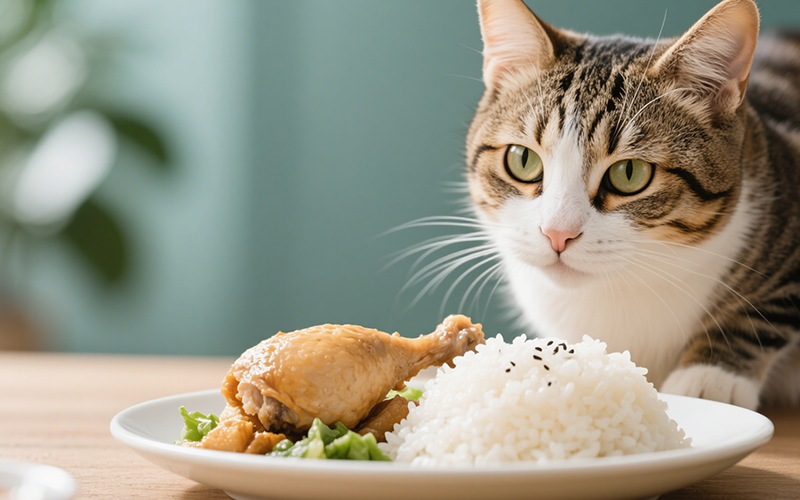
Feline Nutrition 101: The Obligate Carnivore Imperative
Before analyzing chicken and rice specifically, it's crucial to understand the foundation of feline dietary needs. Cats are **obligate carnivores**. This biological classification means:
Meat is Essential:** Their bodies are biologically designed to derive primary nutrients directly from animal tissue. They cannot thrive or survive long-term on a vegetarian diet. Their systems require nutrients found only or predominantly in meat.
High Protein Requirement:** Cats need significantly higher levels of high-quality, animal-based protein compared to dogs or humans for energy, muscle maintenance, enzyme function, hormone production, and immune system support.
Specific Nutrient Needs:** They require essential nutrients like taurine (critical for vision, heart health, reproduction), arachidonic acid (an essential fatty acid), and pre-formed Vitamin A (retinol), which are abundant in animal sources but lacking or unavailable in plant matter. Deficiencies can lead to severe health problems (e.g., blindness or dilated cardiomyopathy from taurine deficiency).
Limited Carbohydrate Processing:** Cats have minimal physiological need for carbohydrates. Their digestive systems lack key enzymes (like salivary amylase needed for initial starch breakdown) and have lower levels of pancreatic amylase compared to omnivores, making efficient digestion of starches difficult. Carbs primarily offer empty calories for felines.
Fat Utilization:** Animal fats are a crucial energy source and provide essential fatty acids vital for skin, coat, and overall health.
This biological framework is the lens through which we must evaluate any food offered to cats, including components like chicken and rice.
Chicken for Cats: A Suitable Protein Source (With Critical Caveats)
Plain, cooked chicken is generally considered a safe and highly beneficial protein source for cats, aligning well with their carnivorous needs:
High-Quality Animal Protein:** Provides all the essential amino acids cats require in a readily digestible form, supporting muscle health and overall bodily functions.
Essential Nutrients:** Contains important B vitamins (like Niacin B3 and Pyridoxine B6, crucial for metabolism and enzyme function), phosphorus (for bone health), and selenium (an important antioxidant).
High Palatability:** The taste and smell of plain cooked chicken are highly appealing to most cats, making it an excellent motivator or treat.
Hydration Source:** Cooked chicken naturally contains a good amount of moisture, contributing positively to a cat's overall hydration – important for kidney and urinary tract health.
Digestibility:** Plain cooked chicken is generally easy for cats to digest, making it suitable even for sensitive stomachs when prepared correctly.
Critical Safety Considerations MUST Be Followed for Chicken:
MUST Be Cooked Thoroughly:** This is non-negotiable. Feeding raw chicken to cats carries a significant risk of bacterial contamination with pathogens like ***Salmonella***, ***Campylobacter***, and potentially ***E. coli***. These bacteria can cause severe gastroenteritis (vomiting, diarrhea, fever, lethargy) in cats and are also **zoonotic**, meaning they can be transmitted to humans, posing a particular risk to children, the elderly, and immunocompromised individuals. Always cook chicken fully to an internal temperature of 165°F (74°C) to kill these harmful bacteria.
PLAIN Only - No Seasonings!** This is paramount. Chicken prepared for humans often contains ingredients that are toxic or harmful to cats:
***Onions & Garlic (Powder, Salt, Fresh)***: **HIGHLY TOXIC**. These damage red blood cells, causing potentially fatal hemolytic anemia. Never use chicken boiled in broth containing onion or garlic.
***Salt***: Excess sodium is dangerous for cats, straining their kidneys and heart. It can lead to salt toxicity (hypernatremia) with neurological signs. Boil chicken in plain water only.
***Oils & Butter***: Add unnecessary fat, risking GI upset and potentially triggering pancreatitis.
***Other Spices/Herbs***: Many can cause stomach irritation or have unknown toxic effects in cats.
NO BONES - Ever! Critical Danger!** Cooked chicken bones become brittle and splinter easily when chewed. These sharp shards pose severe risks:Always use boneless chicken, or meticulously remove every single fragment of bone *after* cooking and *before* serving. This applies to all cooked bones.
**Choking:** Obstructing the airway.
**Oral Injury:** Damaging gums, tongue, or palate.
**Internal Perforation:** Puncturing the esophagus, stomach, or intestines, leading to internal bleeding and peritonitis (a life-threatening infection).
**Intestinal Obstruction:** Blocking the digestive tract.
Skin in Moderation (or Avoid):** Chicken skin is very high in fat. While a tiny amount might be tolerated occasionally by a healthy cat, large amounts can cause significant GI upset (vomiting, diarrhea) and increase the risk of pancreatitis. Removing the skin is the safest approach, especially for regular treats or bland diets.
When these rules are strictly followed, **plain cooked chicken for cats** (boneless, ideally skinless) is a safe and healthy treat or dietary component.
Rice for Cats: Limited Value, Specific Uses, Potential Downsides
Rice presents a very different picture compared to chicken. Its suitability for cats is highly questionable outside of one specific context.
Nutritional Value for Cats:** Extremely minimal. Rice is almost entirely carbohydrates (starch). Cats, as obligate carnivores, have no biological requirement for carbohydrates. These provide primarily "empty" calories, lacking the essential proteins, amino acids (like taurine), fatty acids, and specific vitamins cats need from animal sources.
Digestibility Issues:** Cats lack the enzyme salivary amylase for initial starch digestion and have lower levels of pancreatic amylase than omnivores. While plain cooked *white* rice is considered more digestible than brown rice or other complex grains, large amounts can still overwhelm their system, leading to fermentation in the gut, gas, bloating, and potentially diarrhea.
Blood Sugar Impact:** As a carbohydrate, rice can cause spikes in blood sugar levels. This is generally undesirable and a particular concern for cats with diabetes or those at risk of developing it.
Arsenic Contamination Potential:** Rice plants can absorb inorganic arsenic from the soil and water more readily than many other crops. While the levels in a typical small serving used therapeutically are unlikely to cause acute toxicity, it's a factor that argues against making rice a regular part of a cat's diet. Thoroughly rinsing rice before cooking and using a higher water-to-rice ratio during cooking can help reduce arsenic levels.
Brown Rice vs. White Rice:** Brown rice retains the bran and germ, making it higher in fiber. While fiber can sometimes be beneficial, the amount and type in brown rice are often too much for a cat's digestive system and more likely to cause irritation or diarrhea compared to plain white rice. For the limited times rice is used, white rice is preferred for its blandness and lower fiber.
When is Rice Used? The "Bland Diet" Context Explained
The primary, and generally only, appropriate use of rice for cats is as a component of a temporary **bland diet** prescribed by a veterinarian to manage acute episodes of uncomplicated gastrointestinal upset, such as mild diarrhea.
Purpose:** In this specific context, plain cooked *white* rice serves a few functions: it's low in fat and considered relatively easy to digest (compared to complex foods), its blandness is gentle on an irritated gut, and its starchiness can help absorb excess water in the colon, potentially binding loose stool. It also provides some easily accessible calories when the cat might not tolerate richer foods.
Strictly Temporary:** This **bland diet for cats** (usually boiled chicken/lean meat mixed with white rice) is **nutritionally incomplete** and **must only be used short-term** (typically 2-5 days) as directed by a vet while the gut recovers. Prolonged use will lead to nutritional deficiencies.
Veterinary Supervision is MANDATORY:** Never self-prescribe a bland diet. Persistent vomiting or diarrhea requires a veterinary diagnosis to rule out serious underlying causes (parasites, infections, pancreatitis, foreign bodies, IBD, kidney disease, etc.) that need specific treatment. Your vet will determine if a bland diet is appropriate and provide exact instructions.
Therefore, while **rice for cats** has a very narrow therapeutic application under professional guidance, it is not a suitable treat or regular dietary component due to its lack of nutritional value and potential digestive downsides.
Combining Rice and Chicken: Suitable Meal or Risky Habit?
Given the distinct profiles of chicken and rice, what about feeding them together?
As a Regular Daily Diet? ABSOLUTELY NOT.** This is a critical point. A diet consisting only of chicken and rice is severely deficient and **will cause serious health problems** over time. It lacks essential fatty acids, calcium (leading to a dangerous calcium-to-phosphorus imbalance causing metabolic bone disease), taurine (potentially leading to blindness and heart failure), and numerous vitamins and minerals vital for feline health. Cats require a complete and balanced diet formulated to meet AAFCO standards or prepared according to a veterinary nutritionist's recipe.
As an Occasional Treat? Not Ideal.** While the plain chicken component is fine, adding rice provides no real benefit and just adds unnecessary carbohydrates. If offering a treat, stick to just the plain, cooked chicken for a species-appropriate reward. Mixing rice in as a regular treat dilutes the nutritional value of their main diet.
For Short-Term Bland Diet? YES, but ONLY under veterinary direction.** This is the specific, limited scenario where the combination is acceptable and potentially beneficial, but its use must be temporary and guided by a veterinarian to manage acute GI upset while ensuring a return to a balanced diet as soon as possible.
The combination of chicken and rice for cats should primarily be viewed as a temporary therapeutic tool, not a standard meal or treat.
Safe Preparation Guide: How to Cook Chicken and Rice for Cats (When Appropriate)
Whether preparing chicken as a treat or making a vet-recommended bland diet, precise preparation is key:
Preparing Plain Boiled Chicken:
Select Chicken:** Use boneless, skinless chicken breast or thighs.
Prepare:** Rinse the chicken if desired. Cut into manageable pieces if large.
Boil:** Place chicken in a pot, cover with plain, fresh water. **CRITICAL: Add NO salt, oil, butter, seasonings, onions, garlic, broth powders, etc.**
Cook Fully:** Bring to a boil, then reduce heat and simmer until completely cooked through (no pink). Internal temperature should reach 165°F (74°C).
Remove & Cool:** Take chicken out of the water. Let it cool completely.
Shred or Dice:** Cut into small, bite-sized pieces. If starting with bone-in chicken (highly discouraged), meticulously remove ALL bones now.
Preparing Plain Cooked White Rice (for Bland Diet Only):
Select Rice:** Use plain white rice (e.g., long-grain white rice). Avoid brown rice or instant/flavored rice mixes.
Rinse (Optional):** Rinsing rice under cold water before cooking may remove excess surface starch and potentially reduce arsenic levels.
Cook:** Cook according to package directions using **plain water only**. Do NOT add salt, butter, oil, or broth. Cook until very soft.
Cool:** Allow the cooked rice to cool completely.
Combining for Bland Diet (Veterinarian's Instructions Prevail):
Follow your vet's specific instructions on the ratio of chicken to rice (e.g., starting with 75% rice / 25% chicken and gradually shifting towards more chicken), total amount per meal, feeding frequency (often small, frequent meals), and duration of the diet. Mix the components thoroughly.
Portion Control and Moderation: Key to Safe Treating
Chicken as a Treat:** Keep portions small. A few small pieces (perhaps a tablespoon total) are usually sufficient for a treat. Adhere to the **10% rule:** all treats combined should not exceed 10% of the cat's total daily caloric intake to maintain dietary balance and prevent weight gain.
Rice:** Avoid offering rice as a regular treat. When used therapeutically in a bland diet, follow veterinary portion guidelines precisely.
Can Kittens Eat Boiled Chicken and Rice?
Similar principles apply, with heightened caution:
Boiled Chicken Treat:** Tiny pieces of plain, cooked, boneless chicken are safe as an occasional treat for kittens.
Rice:** Even less appropriate for kittens than adults due to their rapid growth and critical need for nutrient-dense, balanced food. Only use if specifically prescribed by a vet for diarrhea.
Nutritional Needs:** Kittens have extremely high requirements for energy, protein, calcium, and other nutrients. Their diet MUST primarily consist of a high-quality commercial food formulated specifically for kittens (meeting AAFCO Kitten standards). Boiled chicken or rice should never displace this essential nutrition.
Bone Vigilance:** Be absolutely certain no bones are present.
Focus on complete kitten nutrition; use plain boiled chicken only as a minimal treat.
Expert Veterinary Opinion on Chicken and Rice for Cats
The veterinary community widely agrees on the following:
**Plain, cooked, boneless, skinless chicken** is a safe, healthy, highly digestible protein treat for cats when given in moderation.
**Raw chicken poses significant bacterial risks** and should be avoided.
**Cooked chicken bones are extremely hazardous** and must never be fed.
**Seasonings (especially salt, onion, garlic) are dangerous** and must be excluded.
**Rice offers negligible nutritional value** for cats and is primarily indigestible carbohydrates.
The combination of **plain cooked chicken and white rice** is appropriate ONLY as a **temporary, veterinarian-prescribed bland diet** for specific GI issues.
Feeding chicken and rice as a **primary or long-term diet is nutritionally deficient and harmful**, leading to serious health consequences.
A **complete and balanced commercial cat food** appropriate for the cat's life stage is the cornerstone of feline health.
Summary Table: Cats Eating Chicken and Rice
| Aspect | Safety & Recommendations for Cats |
| Can Cats Eat Chicken and Rice? | Chicken: Yes (plain, cooked, boneless, moderate). Rice: Limited use (vet-guided bland diet). Combination: **NOT** as a regular diet. |
| Plain Cooked Chicken | Safe & nutritious treat/supplement in moderation. Must be boneless, skinless (ideal), unseasoned. |
| Raw Chicken | Dangerous (Bacteria: *Salmonella*, etc.). Avoid. |
| Chicken Bones (Cooked) | **EXTREMELY DANGEROUS.** Splintering hazard (choking, perforation). NEVER feed. |
| Seasoned Chicken | Dangerous. Risk of toxic ingredients (onion, garlic, salt) and GI upset. |
| Rice for Cats | Minimal nutritional value. Limited use ONLY for temporary bland diet (plain white rice, vet guidance). Not a treat. |
| Chicken & Rice Combination | Nutritionally incomplete. Suitable ONLY as temporary vet-prescribed bland diet. Harmful long-term. |
| Safe Preparation | Boil/bake boneless, skinless chicken PLAIN. Cook white rice PLAIN. Cool. Chop small. No additives. |
| Portion Control (Treat) | Chicken: Small amounts (few bite-sized pieces), max 10% daily calories. Rice: Avoid as treat. |
Navigating Cat Diet & Health Concerns? PettureX Offers Support!
Understanding the specific dietary needs of cats, including when seemingly simple foods like chicken and rice are appropriate or risky, is key to good pet parenting. If your cat experiences digestive upset or you have questions about their nutritional needs, accessing reliable information quickly is helpful while consulting your primary veterinarian for diagnosis and tailored advice.
The PettureX App provides innovative features for today's cat owners:
24/7 AI Vet Consultation: Get immediate AI-powered answers to questions about diet ("Is boiled chicken okay daily?") or symptoms ("Why does my cat have diarrhea?"), helping you assess the situation anytime.
Image Recognition Technology: Useful for breed identification or getting preliminary insights into visible health issues.
AI-Powered Symptom Checker: Describe your cat's symptoms for an AI analysis of potential causes, including dietary issues or illness, facilitating effective communication with your vet.
Comprehensive Pet Health Database: Quickly access information on feline nutrition, common health problems, safe foods, and preventive care strategies.
PettureX serves as a convenient digital resource, offering AI-driven support and information designed to complement the essential, personalized care provided by your veterinarian.
Conclusion: Chicken - A Great Treat; Rice - For Sick Days Only (with Vet OK)
In summary, the answer to "can cats eat chicken and rice?" is multifaceted. Plain, cooked, boneless chicken is an excellent, safe, and species-appropriate treat for cats when given in moderation. However, rice offers little nutritional value and is generally unsuitable for cats, except when prescribed by a veterinarian as part of a temporary bland diet (using plain white rice) to manage specific gastrointestinal issues.
Never feed raw chicken or cooked chicken bones due to severe safety risks. Avoid all seasonings, especially toxic ones like onion and garlic. Critically, remember that a diet consisting solely of chicken and rice is nutritionally incomplete and will cause serious health problems if fed long-term.
Prioritize a complete and balanced commercial cat food formulated for your cat's life stage. Use plain boiled chicken as a healthy treat, and reserve the chicken-and-rice combination strictly for short-term, veterinarian-guided therapeutic use.
Related
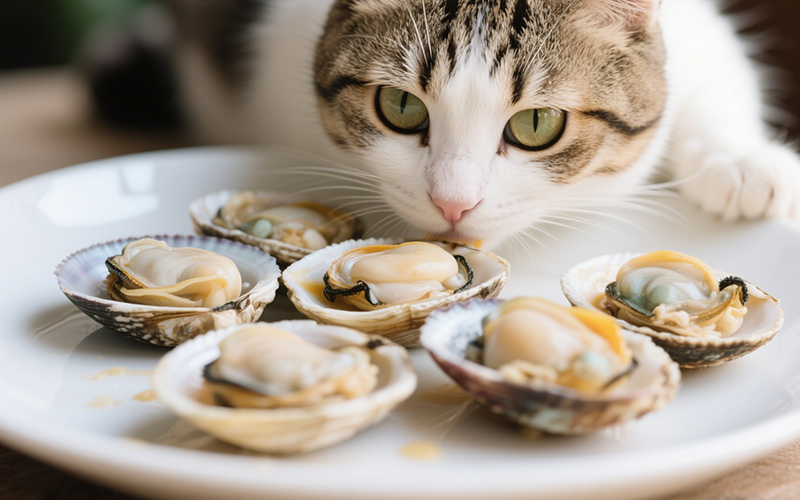
Seafood Surprise: Can Cats Eat Clams Safely? (Vet-Reviewed Risks & Guide)
- 15 Apr 2025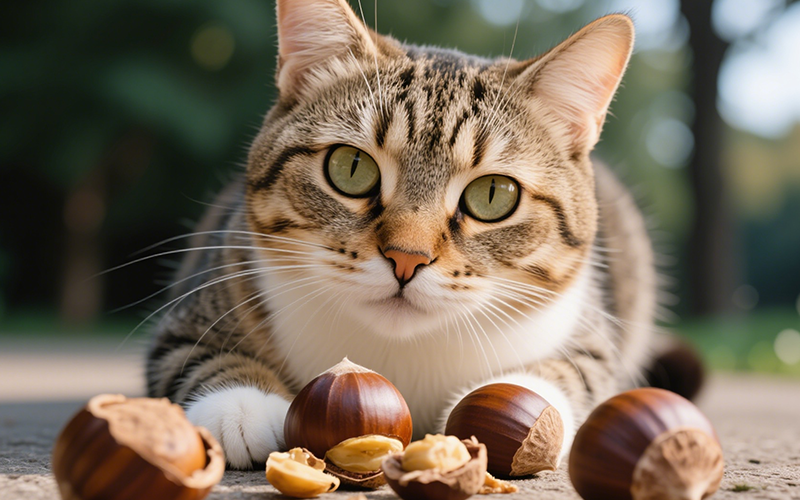
Nutty Concerns: Can Cats Eat Chestnuts Safely? Vet Explains the Risks (True vs. Horse Chestnuts)
- 15 Apr 2025
Creepy Crawly Cuisine? Can Cats Eat Centipedes Safely? (Vet-Reviewed Warning)
- 15 Apr 2025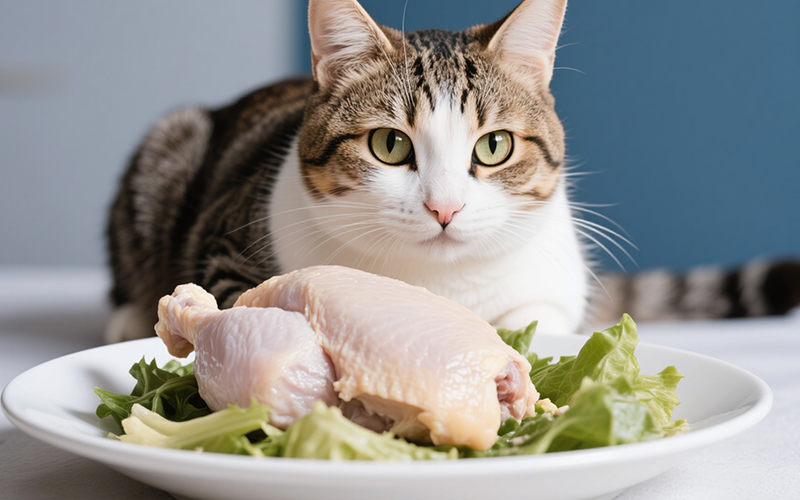
Boiled Chicken for Cats: A Purrfectly Safe Treat or Potential Pitfall? (Vet-Reviewed Guide)
- 15 Apr 2025
The Gourd Guide: Can Cats Eat Canned Pumpkin Safely? Vet-Reviewed Benefits & Risks
- 15 Apr 2025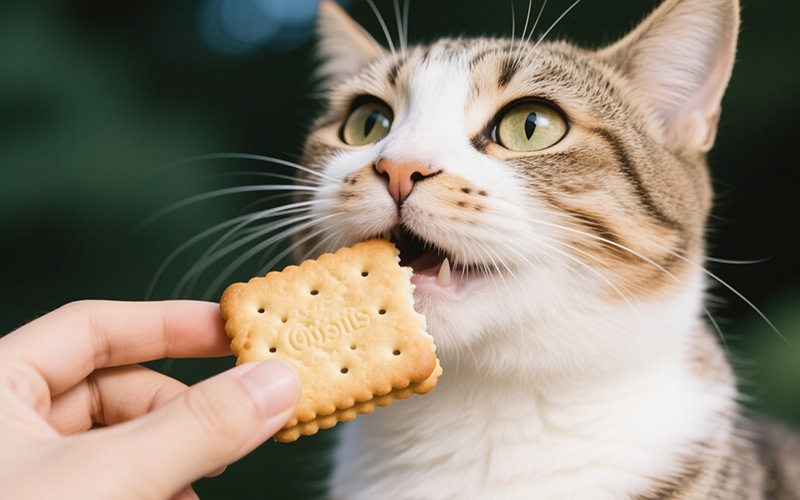
The Crumbly Truth: Can Cats Eat Biscuits Safely? Vet Warns of Hidden Dangers
- 15 Apr 2025
Beef Liver for Cats: Nutrient Powerhouse or Risky Treat? (Vet-Reviewed Safety Guide)
- 15 Apr 2025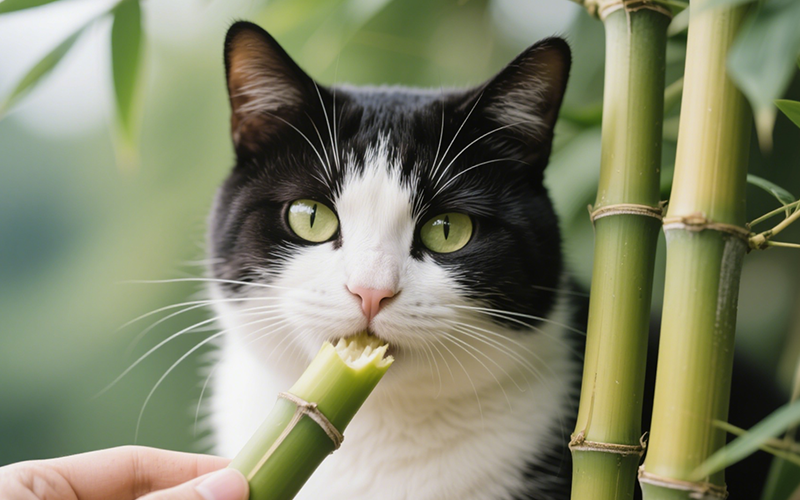
Green Stalks & Curious Cats: Can Cats Eat Bamboo Safely? (Vet-Reviewed Guide)
- 15 Apr 2025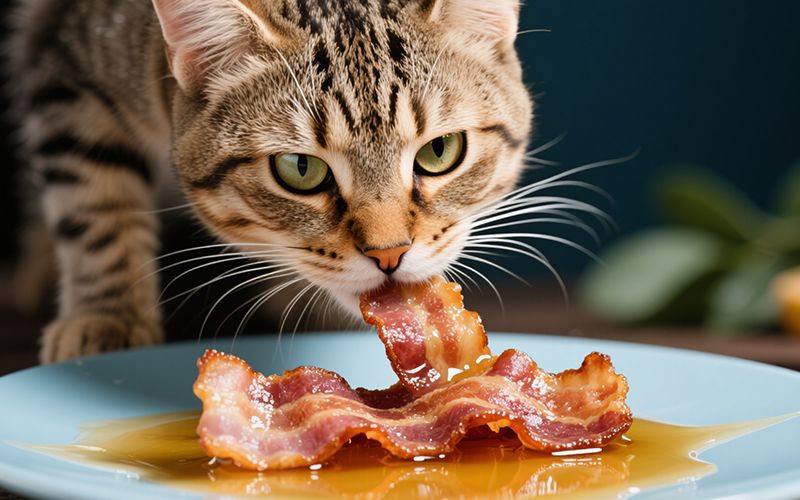
Fat Trap Alert: Can Cats Eat Bacon Grease Safely? (Vet-Reviewed Dangers)
- 15 Apr 2025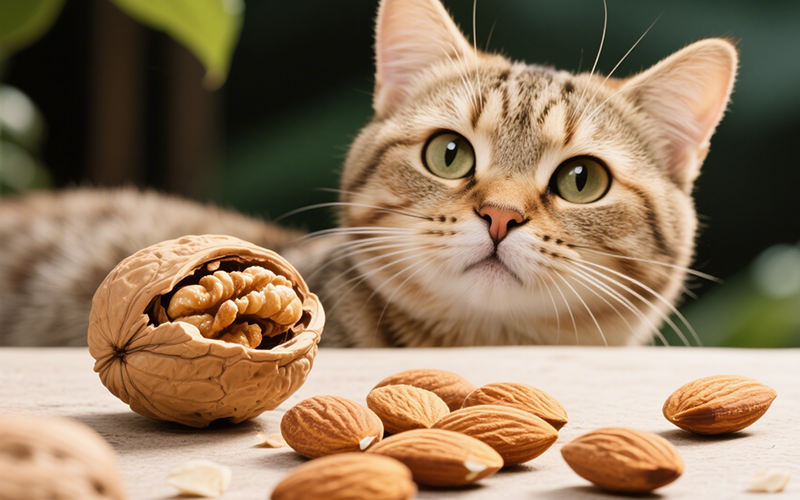
Nutty Notion or Nasty Nibble? Can Cats Eat Almonds Safely? (Vet-Reviewed Guide)
- 14 Apr 2025
